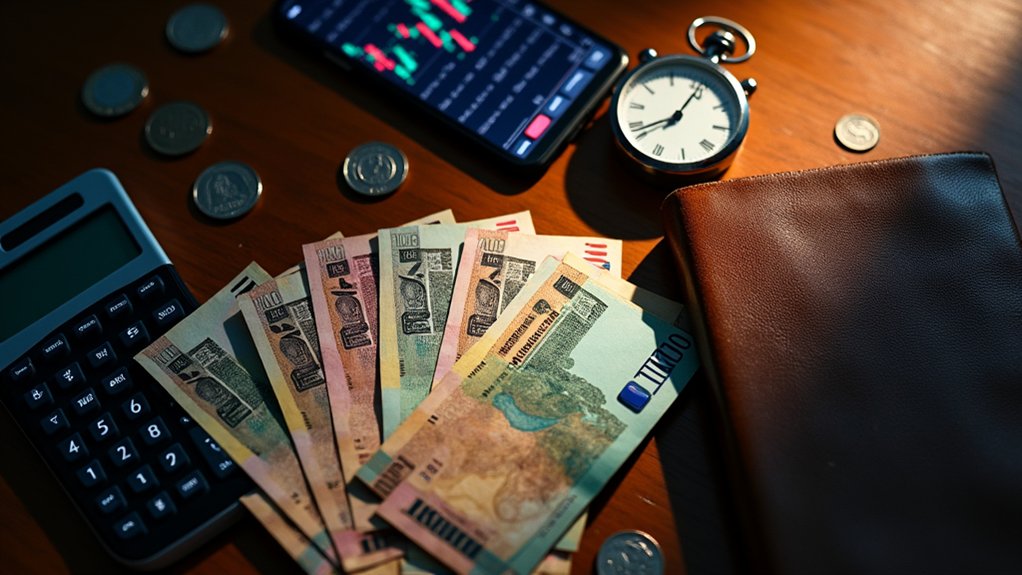EUR/USD peaks during London hours with 114-pip average moves, especially during the London-New York overlap from 8am to noon EST. GBP/USD follows the same pattern with 127 pips in London. USD/JPY comes alive in Tokyo with 51 pips, then ramps up to 66 during London. AUD/USD and NZD/USD start in Sydney and gain steam through Tokyo, which handles 32 percent of their daily volume. Trading outside these windows means fighting wider spreads and sluggish price action—the forex equivalent of showing up after the party ends.

Forex markets never sleep, but African traders often find themselves trading in the dark—literally and figuratively. Load shedding in South Africa. Midnight alarm clocks in Nigeria. The global forex machine runs 24 hours from Sunday 5pm to Friday evening, but it doesn't care about your time zone. Four main sessions drive the action: Sydney, Tokyo, London, New York. London handles about 35 percent of all forex transactions. That's where the real money moves.
EUR/USD loves the London session. Average movement hits 114 pips during London hours, dropping to 92 pips in New York. If a trader in Nairobi or Lagos wants EUR/USD action, they're waking up early or staying up late. Seventeen percent of volume trickles through Tokyo, but the bulk happens when Europe and America are awake. The London-New York overlap—8am to 12pm EST—is when spreads tighten and prices jump. That's 3pm to 7pm in Johannesburg, 2pm to 6pm in Lagos. Not terrible. Not convenient either.
USD/JPY flips the script. Tokyo session grabs 33 percent of daily volume and sees the highest volatility at 51 pips. London pushes it to 66 pips, New York to 59. For African traders chasing yen pairs, Tokyo hours mean the middle of the night. The brief Tokyo-London overlap around 3am to 4am EST during summer is prime time—if insomnia is your thing.
GBP/USD follows London like a shadow. Average movement during London hours: 127 pips. New York keeps it lively at 99 pips. Tokyo session? Dead quiet. The pound wakes up mid-morning UK time, which lands squarely in African afternoons. Accra, Cairo, Casablanca—decent timing. But the tightest spreads and sharpest moves still cluster around London open, 8am London time. Order flow concentration during these hours shapes price formation more decisively than any technical indicator.
AUD/USD and NZD/USD start their day in Sydney, gain momentum in Tokyo—32 percent of daily volume—then spike again during London and New York. Pip ranges hover around 77 to 83 for AUD/USD, 62 to 72 for NZD/USD depending on session. Sydney sets the tone, Tokyo follows through. For a trader in Ghana or Kenya, that's late evening into early morning. Understanding how volatility patterns shift across these sessions helps traders position themselves when opportunity peaks.
Session overlaps deliver the highest liquidity and volatility. Seven percent of daily volume trades between 8:30am and 9:00am EST alone. After New York closes, liquidity falls off a cliff. Central banks and large institutional investors dominate price movements during these peak windows, with commercial banks facilitating the bulk of transactions. The BIS Triennial FX Survey tracks these trading volumes and market structures across sessions, offering a comprehensive view of how forex activity distributes globally. African traders work around everyone else's peak hours. The market doesn't adjust. You do.
Common Questions
Do African Public Holidays Affect Liquidity When Trading Major Currency Pairs?
African public holidays barely touch major pairs like EUR/USD or GBP/USD. These pairs run on London, New York, and Tokyo liquidity—markets that don't blink when Johannesburg takes a day off. The impact is minimal, almost negligible.
Major pairs keep their tight spreads and deep order books regardless of what's happening in Nairobi or Lagos. The global forex machine doesn't slow down for regional African holidays. It's just how the market works—size matters, and African trading volumes don't move the needle on majors.
Which Session Overlaps Offer the Best Spreads for African-Based Traders?
The London–New York overlap delivers the tightest spreads for African traders, plain and simple.
EUR/USD and GBP/USD spreads drop by 1–2 pips during this window, which runs 15:00–19:00 SAST in South Africa and 16:00–19:00 EAT in Kenya.
Over half of global forex volume happens here.
USD/JPY also tightens up.
USD/ZAR gets busier but spreads can widen unpredictably.
Commodity pairs improve but stay wider than the majors.
How Does Loadshedding in South Africa Impact Real-Time Trade Execution During Peak Hours?
Loadshedding hits hardest between 16:00 and 22:00—right when London and New York sessions overlap and liquidity peaks.
South African traders lose internet access during 2.5-hour rotational blocks, missing trades, news events, and price moves. Even with generators, ISP drops still kill connections. Mobile data helps if cell towers have backup power.
Stage 2 outages happen multiple times weekly during high volatility windows.
Brokers add redundant networks, but slippage and execution delays remain unavoidable realities during grid failures.
Can Nigerian Traders Access Asian Session Opportunities Despite Internet Connectivity Challenges?
Yes, but it's messy. Nigerian traders can tap Asian session opportunities between 01:00–10:00 AM WAT, targeting USD/JPY and AUD pairs during Tokyo hours. The problem? Internet speeds lag global averages, and network outages hit hard.
Solutions exist—pending orders, VPS hosting, mobile apps built for low bandwidth. The Asian session's lower volatility actually helps; less chaos means fewer moments where a lagging connection costs you money. It's doable, just not smooth.
Do African Brokers Adjust Their Spreads Differently Across London and New York Sessions?
Yes, they do. Most African brokers run floating spread models that tighten during the London-New York overlap when liquidity peaks. EUR/USD and GBP/USD spreads drop noticeably then.
During quieter Asian hours, spreads widen to manage risk. Some brokers even run promotional tighter spreads during overlap windows to pull in active traders. News events—like US Non-Farm Payrolls—cause temporary spread spikes until volatility cools. Fixed spread accounts dodge this, but they're rare now.










